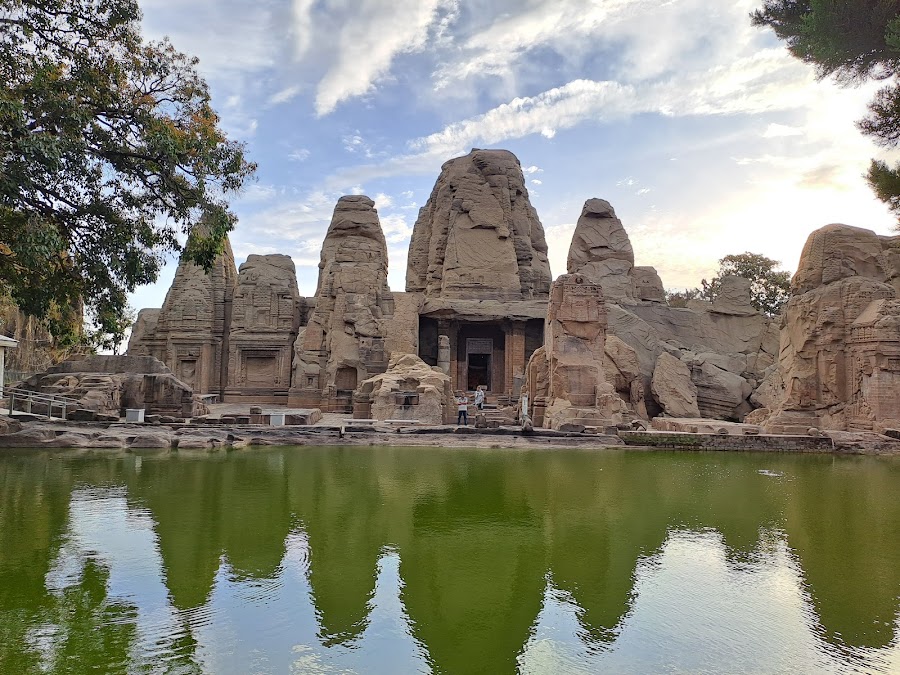
Masroor Rock Cut Temple
Kangra, India
- Capture scenic views of the Dhauladhar range.
- Explore the rock-cut temples and carvings.
- Learn about the history and architecture.
- Meditate in the serene temple complex.
- Visit the nearby Kangra Fort.
Known for:
Description:
The Masroor Rock Cut Temples, located in the Kangra Valley of Himachal Pradesh, India, are a remarkable complex of monolithic rock-cut temples dating back to the 8th century CE. Often referred to as the 'Himalayan Pyramid,' this archaeological marvel features intricately carved shrines dedicated to Hindu deities, primarily Lord Shiva, Vishnu, Rama, and Lakshmana. The temples are carved out of a single sandstone rock and showcase the Nagara style of architecture. The complex includes a main temple surrounded by several smaller shrines, all adorned with detailed sculptures and elaborate carvings. A rectangular pond in front of the temples reflects the majestic structure, creating a stunning visual spectacle. The serene atmosphere and the artistic brilliance of the carvings make Masroor a must-visit destination for history buffs, architecture enthusiasts, and spiritual seekers.
History:
The Masroor temples are believed to have been constructed in the 8th century CE, during the reign of the Katyuri rulers. The temples are dedicated to Hindu deities, indicating the prevalence of Hinduism in the region during that period. The intricate carvings and architectural style suggest the involvement of skilled artisans and sculptors. However, the temples were left incomplete, possibly due to an earthquake or other natural calamity. Over the centuries, the temples suffered damage and neglect, but their grandeur and artistic significance remain intact. Archaeological surveys and restoration efforts have been undertaken to preserve this historical treasure. The temples stand as a testament to the rich cultural heritage and artistic prowess of ancient India.